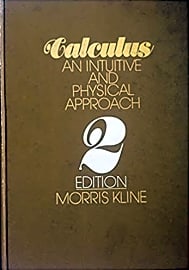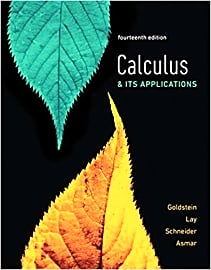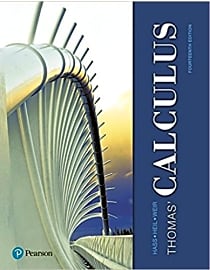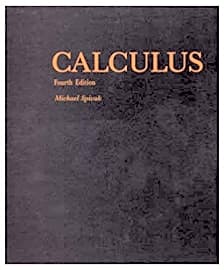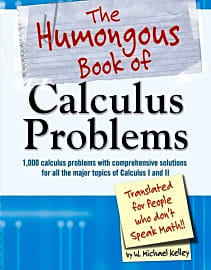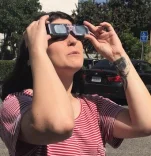The 10 Best Calculus Textbooks

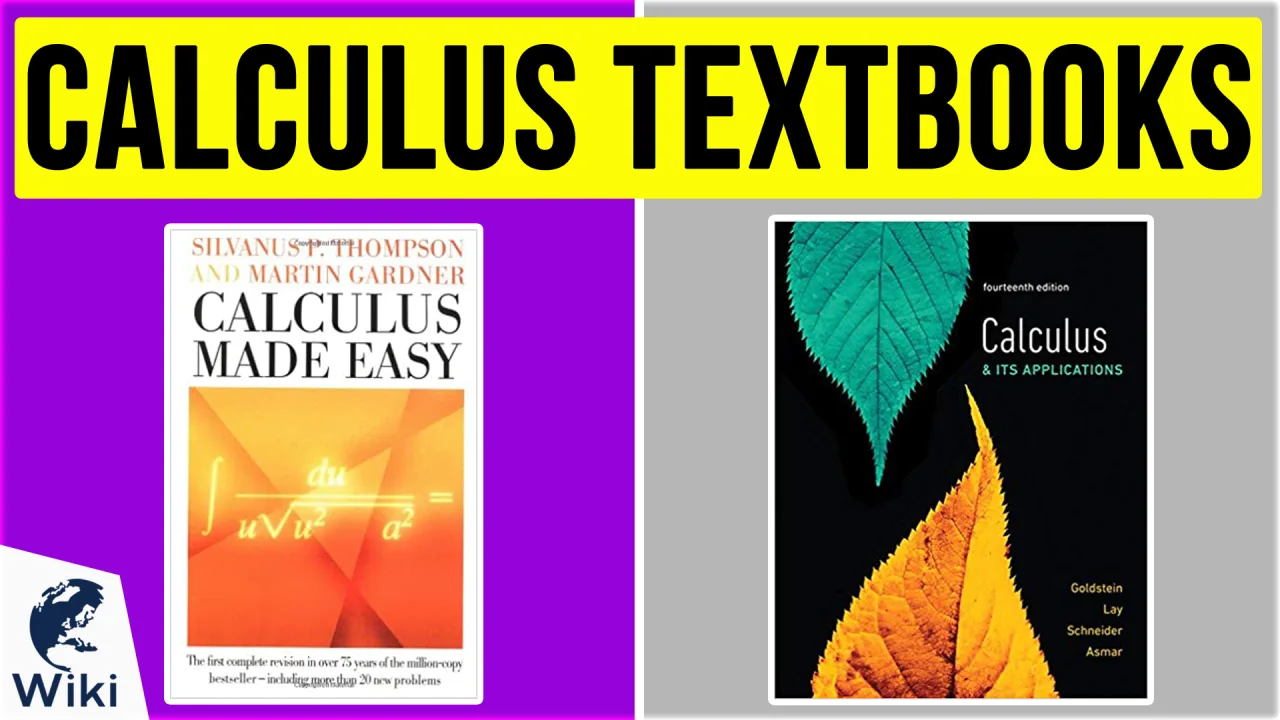
This wiki has been updated 32 times since it was first published in May of 2017. Math is tough enough as it is, so you don't need bad instruction making it that much harder. These calculus textbooks will help guide you through one of the most difficult subjects you're likely to encounter, and they're packed with quizzes, illustrations, and definitions designed for all levels, so even the biggest math-phobes can breathe easy while mastering the material. When users buy our independently chosen editorial choices, we may earn commissions to help fund the Wiki.
Editor's Notes
July 22, 2020:
Like with our last update, we made sure every title on this list was in the most recent version, which meant bringing Calculus: Graphical, Numerical, Algebraic up to the fifth edition. We decided to remove Calculus Deconstructed, which was billed as a volume suitable for autodidacts. In reality, it's a tad too rigorous for many self-learners to appreciate without additional help. If you don't struggle with the discipline in general and have the right prerequisite knowledge, then it's still a suitable choice for learning on your own.
We replaced it with a book that is decidedly more beginner-friendly and a classic in the math world: Calculus Made Easy. This one may be over 100 years old, but its tried-and-true way of explaining timeless calculus fundamentals has made it a favorite over the decades. To ensure it was still up to snuff in modern times, mathematician Martin Gardner provided its first major revision since 1921. He added a contemporary and user-friendly voice, updated the text to reflect recent developments in method and terminology, wrote an extensive preface and three new introductory chapters, and added more than twenty recreational problems for practice and enjoyment.
We added Infinite Powers as an alternative for those who require some context to comprehend math. This book is light on technical content and heavy on stories and explanations of how calculus has paved the way for things like radio, television, GPS, ultrasound, the splitting of the atom, and much more. The author also has a gift for framing tricky concepts in a way that makes sense to many. Combined, these features make this one ideal for reading before class, getting disinterested students engaged, and inspiring the future problem-solvers of the world. It's also nice for those who want to learn while taking a break from graphing calculators.
July 08, 2019:
This update ensured our list had titles for high schoolers and college students alike, as well as texts directed to the autodidact and those coming back to the discipline after a long break. Our selections were prioritized by clarity, authority, layout, and pedagogical tools that help teach, reinforce, and review the material for a thorough understanding. A few of our choices touch on precalculus, although if you're completely lost on the subject, it's best to brush up with a dedicated precalculus textbook before diving into calculus.
Since we already had a title dedicated to single variable calculus (Calculus Deconstructed), we felt it appropriate to supplant our previous #9 Calculus of a Single Variable with Calculus, 4th Edition, a rigorous book geared toward aspiring mathematicians. As many of our selections are directed toward the beginner and the learner who may struggle with math, we felt this choice was a good fit for those who are more prepared to take on a challenge.
Calculus, like any branch of math, requires tons of practice for reinforcement, which is why The Humongous Book of Calculus Problems made it to our number 2 spot. Like any good textbook, its aim is to help students achieve a solid understanding of the material, as well as the capability to apply their newfound knowledge to real-world situations with independence.
You'll find James Stewart's "Calculus" as well as Thomas' Calculus, two of the most appreciated titles in the field. Calculus: An Intuitive and Physical Approach is helpful for the student who needs to align the abstract with the physical world, while Calculus: Graphical, Numerical, Algebraic is ideal for those who prefer to cut to the chase. It's also excellent if you're preparing to take AP exams, as its content is aligned to test guidelines.
Special Honors
WolframAlpha Course Assistant Wolfram's Course Assistant is an app designed to assist with any calculus course by helping you work through homework problems, ace tests, and learn vital concepts. It offers step-by-step guidance for derivatives, integrals, and more, covering topics applicable to regular, AP, and AB calculus, as well as AP Calculus BC and I and II. The company also has an app for multivariable calculus. wolframalpha.com
Magoosh Calculus Students who need extra help with calculus should consider looking into Magoosh, an educational company that helps you strengthen your skills with video lessons from expert teachers. It's ideal for autodidacts, those looking for real-life scenarios and examples, and visual learners. Their simple interface makes things easy and is accessible by smartphones and tablets via their Android and iOS apps. The lessons cover everything from precalculus review to advanced integration, with animated tutorials that walk you through each concept. magoosh.com
A Brief History Of Calculus
Over the years, many great minds have worked to expand and improve the original principles of calculus.
Calculus is a branch of mathematics that focuses on rates of change. It's used in fields like physics and engineering to determine how a system will behave in the real world. In other words, you may know that an apple will fall from its branch, but calculus can help you determine how fast it will fall and where it will land. It has been an important subject in schools for years and is one that everybody should endeavor to understand.
While many of its earliest principles can be traced back hundreds or even thousands of years to the work of ancient Greek and Egyptian scholars, calculus as we know it today, is often attributed to the work of mathematicians Sir Issac Newton and Gottfried Wilhelm Leibniz during the early 18th century. Both of them took radically different approaches and arrived at surprisingly similar conclusions. Their results were so similar that Newton and his supporters actually accused Leibniz of plagiarizing his work, resulting in a controversy that historians still debate today.
Over the years, many great minds have worked to expand and improve the original principles of calculus. Today, you can find it implemented in a wide variety of fields from physics to computer science. Economists, doctors, and business people will even use it when a problem needs to be modeled mathematically. Today, calculus is so integral to so many professional fields that not having at least a basic understanding of it is practically unthinkable. There are many complex ideas that you will need to get a handle on, but don't panic. Just start with the fundamentals and work your way up from there.
The Core Ideas
Before you begin trying to solve equations, there are a handful of basic concepts that are essential if you or your child are going to succeed in class. This is not a comprehensive list but rather a brief introduction that, hopefully, gets you started on the path to an even better understanding of calculus.
Put simply, limits make it possible for mathematicians to work with very small numbers.
The term limit is unavoidable when it comes to high-level mathematics. In plain English, a limit is defined as "the maximum level something can reach" but in math, limits are the values that most closely approach the intended number without ever directly arriving at it. In situations where the actual solution would be infinite, limits allow you to produce an answer that is very close to what is needed but has a finite value. This is achieved using a formula. Put simply, limits make it possible for mathematicians to work with very small numbers. They have been part of the standard approach since practically the beginning and that likely won't be changing any time soon.
Limits are often used to define the values of functions. When you input one number into a set of rules and then receive a different number as an answer, you have a function. They are usually noted as algebra problems, where letters are a used in place of numbers until you start to fill them out. In calculus, functions can be used to determine many real-world things like the position of planets over time.
The derivative is the rate at which a function changes. When talking about objects in motion, they will often move faster or slower at different times. The act of finding the derivative is differentiation. By doing this, you will be able to narrow down the highest and lowest values of a function using a graph. The opposite process is called integration, which, when combing with differentiation, can be used to calculate integrals. Sometimes referred to as antiderivatives, integrals allow you to understand the area under a curve where the numbers are constantly changing. Without integrals, it would be impossible to properly measure the area under a curved graph which in turn would make problems in fields like physics extremely difficult to represent.
This all may still look pretty complicated, but don't worry, there are plenty of resources to help reinforce and expand your comprehension of these ideas. With a good teacher and a great textbook, you'll be calculating like a pro in no time. Of course, to get there, you'll need the right tools.
Tools Of The trade
On the first day of class, students usually get a list with all the supplies they will need. Of course, there's always the standard pens, pencils, notebooks, and textbooks. But in math classes like calculus that are high school level and above, you'll often find that one extra item on the list: a graphing calculator.
But, if you're looking for something a little less academic to do, they can also play games.
Scientific calculators are great for most math situations, but their shortcomings become clear when you need to visualize a solution. Like their name suggests, graphing calculators map out the solution to an equation by creating a small graph that appears on the screen. In calculus, the goal is often to build a model that represents a real-world situation. Without a graphing calculator, you would need to sketch out all of the data by hand, which is certainly time-consuming and could lead to you making serious, potentially dangerous mistakes.
Since they can do everything that a normal calculator does and much more, graphing calculators are useful in a variety of places outside of the calculus classroom. You'll definitely find that they are often needed in classes like algebra and trigonometry where they can perform important functions and help students to check their work. Some can even be attached to lab equipment to record various measurements. But, if you're looking for something a little less academic to do, they can also play games. Just don't get caught playing them in class.



